The rise of African contemporary art in the international gaze has been more than well documented. But the enthusiasm, has overshadowed an analysis of how this interest has affected the ecology of the African art sector as a whole. While international interest is powering ahead it does so in the context of art infrastructure and gallery sector on the continent largely under supported and under-developed and local markets only beginning to emerge. As a consequence, the international market interest to date has been largely benefitting individual artists represented by international galleries, with trickle down economics working the same way as they do elsewhere to support the growth and economic sustainability of the local art sectors. We see this at forums such as 1:54 African contemporary art fair, where even in its present 4th edition only 16 out of 40 participating galleries are based on the continent.
However this is starting to change. Despite the challenges, the international market attention has also proved to be a catalyst to formation of new galleries on the continent, who could see a path and a model of sustainability, which did not rely on philanthropic funding as in the past or domestic markets. As a result, the past four years have seen something of a surge in the number of new galleries on the continent, adopting a more internationally focused commercial operating model. Among them Addis Fine Art (Addis Ababa, Ethiopia), 1957 (Accra, Ghana), Circle Art Gallery (Nairobi, Kenya), Art Space (Nairobi, Kenya), Espaco Luanda Art (Luanda, Angola), Al Marhoon Gallery (Algiers, Algeria).
Interestingly most of these new players are developing hybrid models of practice, rather than following the standard international commercial gallery structure, with recognition that their local environment calls for a different approach. They are also deeply conscious of the broader ramifications of their work.
I spoke to several of these new gallerists about their approach to practice and their thoughts on importance of galleries on the continent.
DOMINICK A MAIA-TANNER
Gallery: ELA - Espaço Luanda Arte
Why did you launch ´ELA – Espaço Luanda Arte´?
“Having worked in various art productions (Vidrul Photography, Vidrul Invites, JAANGO, and Container Art, to name a few) over the past almost 8 years, but never in the same venue, it was a personal dream to be able to have an art gallery in Luanda where we could place all theses under one roof. Therefore, ´ELA - Espaço Luanda Arte´ is the realization of this dream. It is located in the heart of old Luanda - the capital city of Angola, where many artists used to have their ateliers (Antonio Ole, Paulo Jazz, Viteix, Kapela Paulo, amongst many others) but have since been displaced to the peripheries and new cities. But more than a commercial gallery, our wish was to be engaged and hold artist residencies, exploring project-based and site-specific shows, with ample spacefor up to five solo private and one large collective residencies at any given moment, an area for round-tables, discussions and artist talks, and a very large exhibition area for solo exhibitions, duets and collective shows. In this respect, we were and remain particularly keen in nurturing Angolan artists not only from Luanda but also the Provinces, and also holding pan-African collaborations so that non-Angolan artists can come and work with their colleagues in Luanda, and Angolan artists can go the other way.
On a third and final level, we are personally motivated to help artists grow by helping them take part in international fairs, as well as setting up protocols so that they can take part in international residencies. Therefore, and without any false modesty, I would say that ´ELA - Espaço Luanda Arte´ is not only a launch pad and a catalyst for many a Angolan artists to grow and develop themselves, but also an artist hub internationally and particularly pan-African wise.”
Why is it important for African galleries to represent African artists?
“In he spirit of Wangari Maathai , I would think that African Contemporary Art ought to be part and take part of a much larger process by which African nationals and non-nationals, but residentson the continent actively discuss what they “owe themselves”, rather than what the outside world owes Africa. So for this reason it is not only important for African galleries to represent African artists, but also for Africans to take a more active part in defining and developing exactly what is African Contemporary Art. For this reason, it is evermore important that intra-continental relationships and collaborations be developed amongst artists, galleries, and cultural institutions on the mainland so that opportunities and trends are created exothermically from Africa to the world, and not brought or ´forced´ endothermically into Africa from an increasing number of European and USA-based galleries who´s views may not necessarily be in the continent´s best interests.”
DANDA JAROLIMEK
Founder of Circle Arts Agency and Circle Art Gallery, Nairobi, Kenya
We started the gallery in Nairobi [in 2015] to provide a pristine ‘white cube’ environment for carefully curated exhibitions. Many of our exhibitions are conceptual group shows as this is still unusual in Nairobi. We also provide an expert advisory service to potential and existing collectors.
Galleries of this level are crucial on the continent, for artists to show their work in a professional space with curatorial advice and for collectors to have somewhere to come to learn about the art scene in their country/region. Access to information on art and what artists to collect is still pretty sparse in East Africa and the process of guiding collectors and providing a bespoke service for each collector is therefore even more important than other places where more information, catalogues etc are available. Often I will spend up to a year talking to people, getting them involved and interested before they acquire their first art work and these relationships are vital to building a dynamic and connected art scene.
WAMBUI COLLYMORE
Founder of The Art Space, Nairobi:
The Art Space was started in October 2015, to provide artists with an alternative to mainstream art galleries in Nairobi. Being such a small industry there are very few key players as far as galleries are concerned and The Art Space is slowly rising up to the challenge to being an additional space where artists can show their work, clients can find inspiring work and the industry can be massaged into further growth. There is no national art gallery in Kenya, so more spaces are definitely needed that bring out the best of Kenya and in our case, the region’s art. We are not at full on hard competition stage yet, we are still in nurturing and discovery stage in Nairobi and that is exciting because of the opportunities it presents for organic growth.
I don’t represent artists, I think our industry is too small to do that. It may be something to consider when the industry grows a bit more and galleries are stronger. Future ambition is to show not just art from the region but from all of Africa and to have strong partnerships with other galleries that are seeking to grow how art is shown, discussed on the African continent.
Interestingly most of these new players are developing hybrid models of practice, rather than following the standard international commercial gallery structure, with recognition that their local environment calls for a different approach. They are also deeply conscious of the broader ramifications of their work.
I spoke to several of these new gallerists about their approach to practice and their thoughts on importance of galleries on the continent.
DOMINICK A MAIA-TANNER
Gallery: ELA - Espaço Luanda Arte
Why did you launch ´ELA – Espaço Luanda Arte´?
“Having worked in various art productions (Vidrul Photography, Vidrul Invites, JAANGO, and Container Art, to name a few) over the past almost 8 years, but never in the same venue, it was a personal dream to be able to have an art gallery in Luanda where we could place all theses under one roof. Therefore, ´ELA - Espaço Luanda Arte´ is the realization of this dream. It is located in the heart of old Luanda - the capital city of Angola, where many artists used to have their ateliers (Antonio Ole, Paulo Jazz, Viteix, Kapela Paulo, amongst many others) but have since been displaced to the peripheries and new cities. But more than a commercial gallery, our wish was to be engaged and hold artist residencies, exploring project-based and site-specific shows, with ample spacefor up to five solo private and one large collective residencies at any given moment, an area for round-tables, discussions and artist talks, and a very large exhibition area for solo exhibitions, duets and collective shows. In this respect, we were and remain particularly keen in nurturing Angolan artists not only from Luanda but also the Provinces, and also holding pan-African collaborations so that non-Angolan artists can come and work with their colleagues in Luanda, and Angolan artists can go the other way.
On a third and final level, we are personally motivated to help artists grow by helping them take part in international fairs, as well as setting up protocols so that they can take part in international residencies. Therefore, and without any false modesty, I would say that ´ELA - Espaço Luanda Arte´ is not only a launch pad and a catalyst for many a Angolan artists to grow and develop themselves, but also an artist hub internationally and particularly pan-African wise.”
Why is it important for African galleries to represent African artists?
“In he spirit of Wangari Maathai , I would think that African Contemporary Art ought to be part and take part of a much larger process by which African nationals and non-nationals, but residentson the continent actively discuss what they “owe themselves”, rather than what the outside world owes Africa. So for this reason it is not only important for African galleries to represent African artists, but also for Africans to take a more active part in defining and developing exactly what is African Contemporary Art. For this reason, it is evermore important that intra-continental relationships and collaborations be developed amongst artists, galleries, and cultural institutions on the mainland so that opportunities and trends are created exothermically from Africa to the world, and not brought or ´forced´ endothermically into Africa from an increasing number of European and USA-based galleries who´s views may not necessarily be in the continent´s best interests.”
DANDA JAROLIMEK
Founder of Circle Arts Agency and Circle Art Gallery, Nairobi, Kenya
We started the gallery in Nairobi [in 2015] to provide a pristine ‘white cube’ environment for carefully curated exhibitions. Many of our exhibitions are conceptual group shows as this is still unusual in Nairobi. We also provide an expert advisory service to potential and existing collectors.
Galleries of this level are crucial on the continent, for artists to show their work in a professional space with curatorial advice and for collectors to have somewhere to come to learn about the art scene in their country/region. Access to information on art and what artists to collect is still pretty sparse in East Africa and the process of guiding collectors and providing a bespoke service for each collector is therefore even more important than other places where more information, catalogues etc are available. Often I will spend up to a year talking to people, getting them involved and interested before they acquire their first art work and these relationships are vital to building a dynamic and connected art scene.
WAMBUI COLLYMORE
Founder of The Art Space, Nairobi:
The Art Space was started in October 2015, to provide artists with an alternative to mainstream art galleries in Nairobi. Being such a small industry there are very few key players as far as galleries are concerned and The Art Space is slowly rising up to the challenge to being an additional space where artists can show their work, clients can find inspiring work and the industry can be massaged into further growth. There is no national art gallery in Kenya, so more spaces are definitely needed that bring out the best of Kenya and in our case, the region’s art. We are not at full on hard competition stage yet, we are still in nurturing and discovery stage in Nairobi and that is exciting because of the opportunities it presents for organic growth.
I don’t represent artists, I think our industry is too small to do that. It may be something to consider when the industry grows a bit more and galleries are stronger. Future ambition is to show not just art from the region but from all of Africa and to have strong partnerships with other galleries that are seeking to grow how art is shown, discussed on the African continent.
Why do you think it is important for the gallery sector to develop on the continent?
Art has a way of linking conversations and galleries are those places where art can converge to bring these conversations to the fore. Think of exhibitions like having a Nigerian, a South African and a Kenyan in the same room talking about a particular issue e.g. the migration crisis, definitions of beauty, politics etc. A strong gallery sector means that more people are employed and make a living from art, more people can create without having to worry so much about the marketing of their art. This means that artist’s work can develop because suddenly, time is opened up. In many countries in Africa, the burden is upon the artist to act as creator, curator and marketer. Galleries can carry at least two of these burdens – curator and marketer. A strong gallery sector means a stronger arts sector.
As an observer with a vested interest, Salimata Diop, and independent curator and artistic director of AKAA art fair, Paris, comments on the rise of new galleriest, that “During the development of the AKAA project, Victoria and I have witnessed the emergence of several new galleries on the continent, such as Guns and Rain in Johannesburg, Art Meets Camera in Cape Town, Addis Fine Art in Addis Ababa or Al Marhoon in Algeria. Our vision for AKAA is to create a space where diverse perspectives and stories meet: for this reason, achieving a balance of galleries from Africa as well as galleries from the rest of the world was always crucial. Mission accomplished as out of 30 participating galleries in 2016, no less than 13 are based in African countries.”
She also adds that “As a Curator and as an African, I believe that no country can develop its art market without strong galleries on site. Furthermore, we need to address the missing links in the art world ecosystem by joining forces and creating networks. We need to support the rising of serious, ambitious, cutting-edge galleries in our countries; galleries to promote, showcase and fight for the artists’ work, galleries whose voices have to be heard in the current global discussion and finally galleries that will participate to major international art shows and fairs.”
This belief in the fundamental importance of a strong gallery sector on the continent, the challenges facing new galleries and the value of networks, has been at the heart of the just formed Emerging African Art Galleries Association (EAAGA) (Valerie Kabov, Danda Jarolimek, co-founders). EAAGA is mutually supportive network designed to foster the growth and development of the gallery sector on the continent and to create collaborative resources for members. Thinking laterally about domestic infrastructure challenges facing young galleries, it aims to leverage cooperation and resource sharing to achieve international competitiveness and to establish professional standards.
Local galleries are the only stakeholders in the sector, with a genuine vested interest in developing local markets for local artists, as well as collector education. It is their mandate and their long-term sustainability. Long-term economic future of African contemporary art is in developing domestic, regional and pan- African markets and opportunities for African artists, which can overcome the current economic and power imbalances between Global North and Africa in contemporary art.
Art has a way of linking conversations and galleries are those places where art can converge to bring these conversations to the fore. Think of exhibitions like having a Nigerian, a South African and a Kenyan in the same room talking about a particular issue e.g. the migration crisis, definitions of beauty, politics etc. A strong gallery sector means that more people are employed and make a living from art, more people can create without having to worry so much about the marketing of their art. This means that artist’s work can develop because suddenly, time is opened up. In many countries in Africa, the burden is upon the artist to act as creator, curator and marketer. Galleries can carry at least two of these burdens – curator and marketer. A strong gallery sector means a stronger arts sector.
As an observer with a vested interest, Salimata Diop, and independent curator and artistic director of AKAA art fair, Paris, comments on the rise of new galleriest, that “During the development of the AKAA project, Victoria and I have witnessed the emergence of several new galleries on the continent, such as Guns and Rain in Johannesburg, Art Meets Camera in Cape Town, Addis Fine Art in Addis Ababa or Al Marhoon in Algeria. Our vision for AKAA is to create a space where diverse perspectives and stories meet: for this reason, achieving a balance of galleries from Africa as well as galleries from the rest of the world was always crucial. Mission accomplished as out of 30 participating galleries in 2016, no less than 13 are based in African countries.”
She also adds that “As a Curator and as an African, I believe that no country can develop its art market without strong galleries on site. Furthermore, we need to address the missing links in the art world ecosystem by joining forces and creating networks. We need to support the rising of serious, ambitious, cutting-edge galleries in our countries; galleries to promote, showcase and fight for the artists’ work, galleries whose voices have to be heard in the current global discussion and finally galleries that will participate to major international art shows and fairs.”
This belief in the fundamental importance of a strong gallery sector on the continent, the challenges facing new galleries and the value of networks, has been at the heart of the just formed Emerging African Art Galleries Association (EAAGA) (Valerie Kabov, Danda Jarolimek, co-founders). EAAGA is mutually supportive network designed to foster the growth and development of the gallery sector on the continent and to create collaborative resources for members. Thinking laterally about domestic infrastructure challenges facing young galleries, it aims to leverage cooperation and resource sharing to achieve international competitiveness and to establish professional standards.
Local galleries are the only stakeholders in the sector, with a genuine vested interest in developing local markets for local artists, as well as collector education. It is their mandate and their long-term sustainability. Long-term economic future of African contemporary art is in developing domestic, regional and pan- African markets and opportunities for African artists, which can overcome the current economic and power imbalances between Global North and Africa in contemporary art.



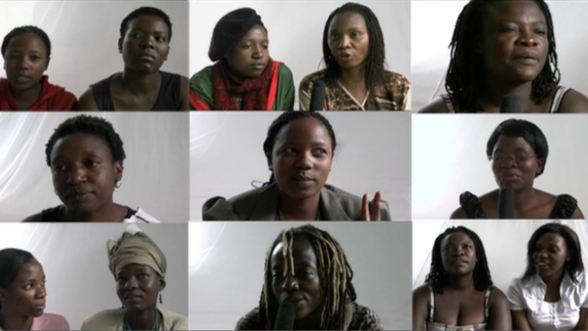
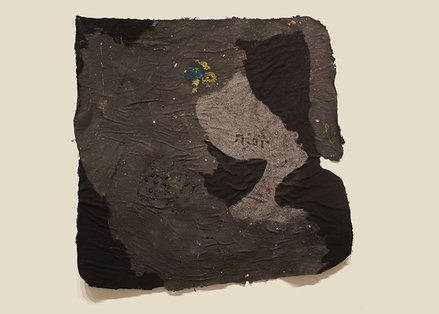
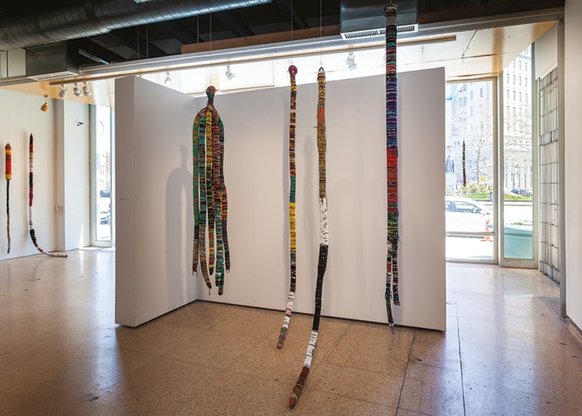
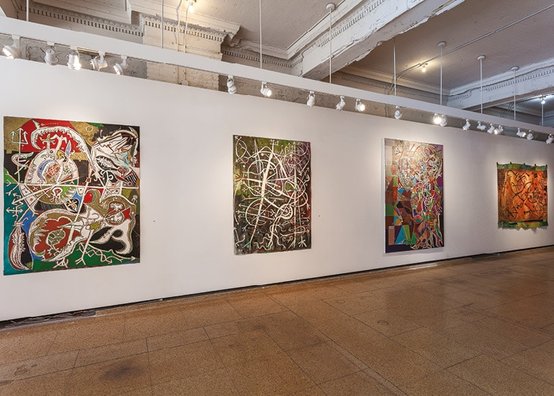





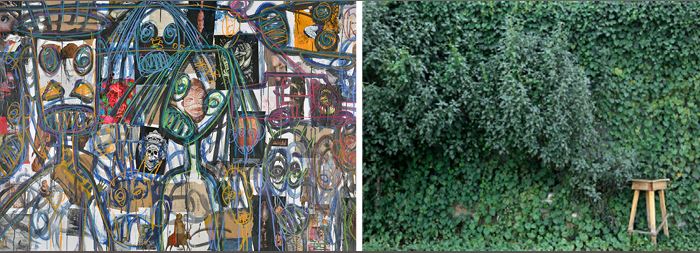
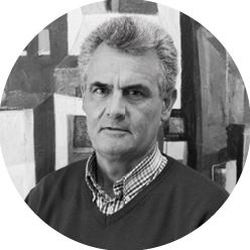



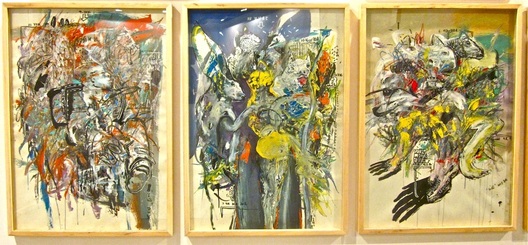
 RSS Feed
RSS Feed
